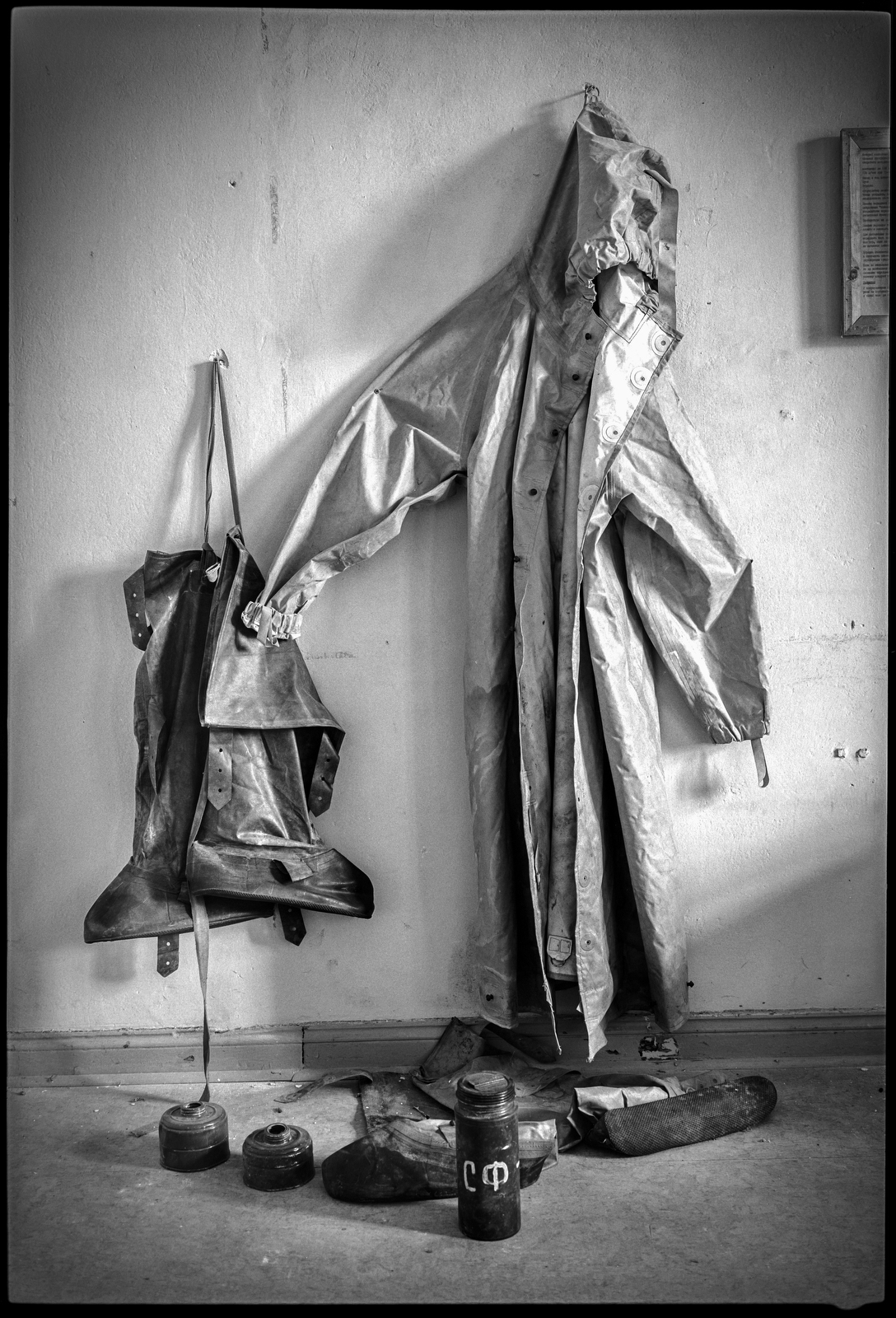Der Wald holt sich sein Areal zurück. Es ist feucht, überall sind Reste von Ruinen und Bauwerken, die langsam verfallen. Der Geruch von Moder und Staub hängt allgegenwärtig in der Luft.
Ich betrete ein gigantisches Gelände von 590 Hektar, in dem schon zur Kaiserzeit Truppenübungsplätze, Kasernen und eine Turnschule entstand. Unter der Nazi-Herrschaft wuchs der Komplex zum wichtigsten Nachrichtenzentrum des deutschen Reichs weiter. Nach dem Kriegsende entstand der größte sowjetische Militärstandort außerhalb der Soviet Union. Bis zu 60.000 Soldaten dienten in den riesigen Bunkeranlagen der verbotenen Stadt und den verschiedenen Kasernen Wünsdorfs.
Wünsdorf war eine verbotene Stadt und eine strikte Sperrzone. Inmitten der gewaltigen Anlage befindet sich das Haus der Offiziere, daneben die Infanterieschule mit prächtigen Theatersälen, eine historische Schwimmhalle, ein vom Wald überwuchertes Freibad aus der Kaiserzeit, ein Offizierskasino und viele versteckte Gebäude und Bunker. Innen finden sich noch viele Artefakte der Soldaten, übriggebliebe Dekorationen und Wandmalereien.
Eine monströse Lenin-Statue dreht dem Hautgebäude den Rücken zu mit dem Blick in die Ferne – Good Bye Lenin.
The forest is taking back its area. It is damp, there are remains of ruins and buildings that are slowly decaying. The smell of mold and dust is everywhere in the air.
I enter a gigantic area of 590 hectares, in which military training areas, barracks and a gymnastics school were built as early as the imperial period. Under the Nazi rule, the complex continued to grow into the most important news center in the German Reich. After the war ended, the largest Soviet military base outside the Soviet Union emerged. Up to 60,000 soldiers served in the huge bunker complex of the forbidden city and the various barracks in Wünsdorf.
Wünsdorf was a forbidden city and a strict exclusion zone. In the middle of the huge complex is the officers ‘house, next to it the infantry school with magnificent theaters, a historic swimming pool, an outdoor pool from the imperial era overgrown by the forest, an officers’ mess and many hidden buildings and bunkers. Inside there are still many artefacts of the soldiers, leftover decorations and wall paintings.
A monstrous statue of Lenin turns its back on the main building and looks into the distance – Good bye Lenin.
• Google Translation •
Das Projekt
Seit 2013 besuchte ich einige Male die verbotene Stadt mit verschiedenen Kameras und fotografierte digital und anlog mit unterschiedlichen Ansätzen. Da dieses Gelände so unglaublich groß ist, finden sich bei jedem Besuch neue Locations und Motive.
Diese Fotoserie aus dem Jahr 2019 ist bei einem von vielen Besuchen mit einer Mittelformat Kamera und nur einem Objektiv entstanden.
Das Haus der Offiziere ist auch eine ideale Location für Fotoworkshops.
Hier geht es zu meinem Workshop Angebot: Fotoworkshop – Haus der Offiziere
– Bei Interesse nehmen Sie bitte Kontakt mit uns auf!
The Project
Since 2013 I have visited the Forbidden City several times with different cameras and took digital and analog photos with different approaches. Since this area is so incredibly large, there are new locations and motifs with every visit.
This photo series from 2019 was taken during one of many visits with a medium format camera and only one lens.
The officers’ house is also an ideal location for photo workshops.
Here is my workshop offer: Fotoworkshop – Haus der Offiziere –
Please contact us if you’re interested!
© 2020 Christian Hager



